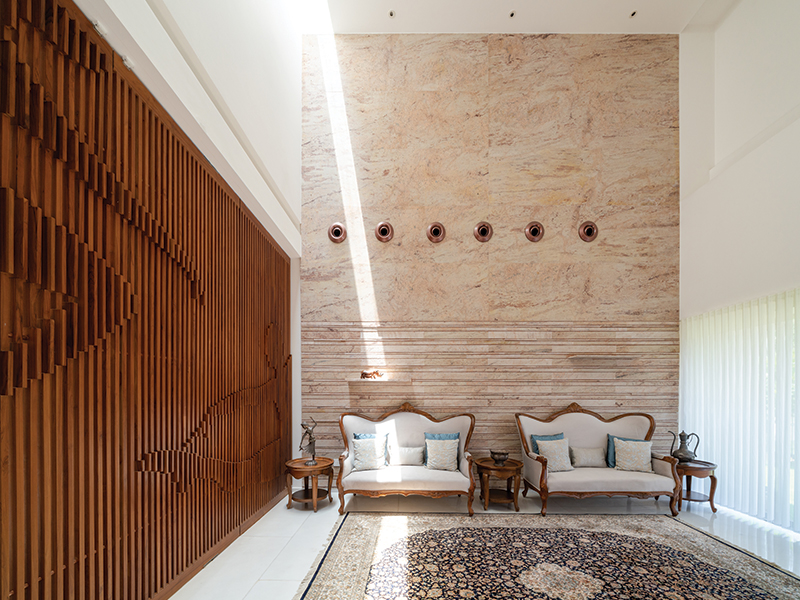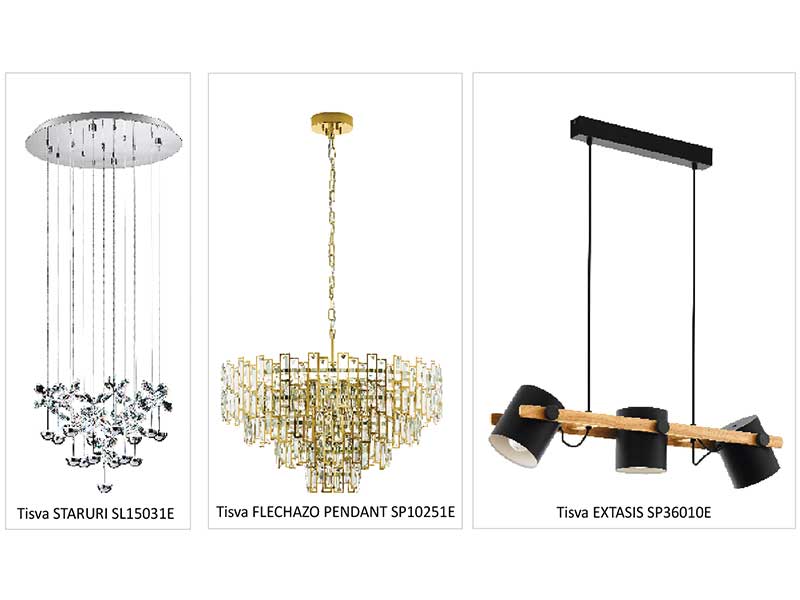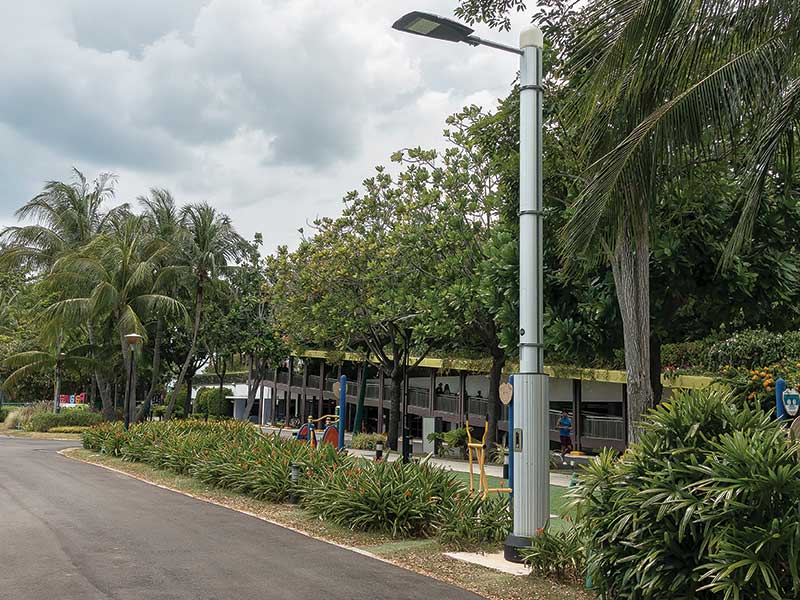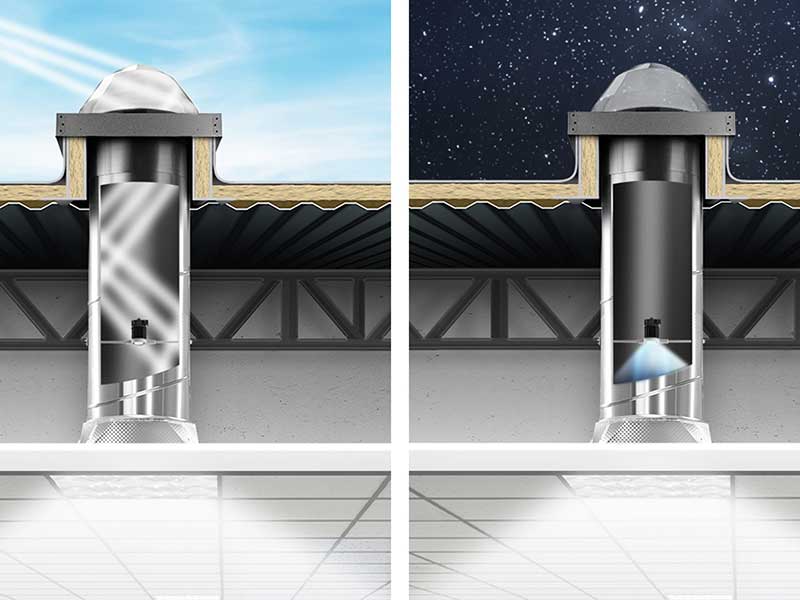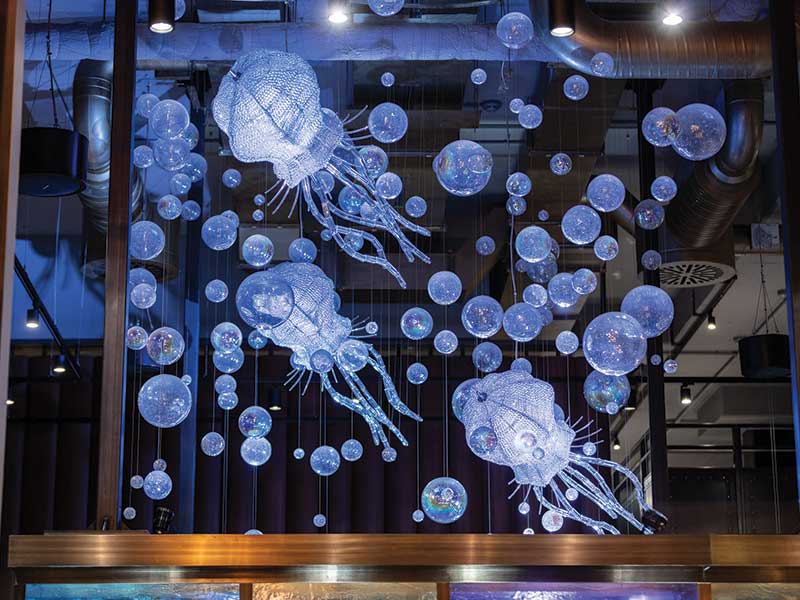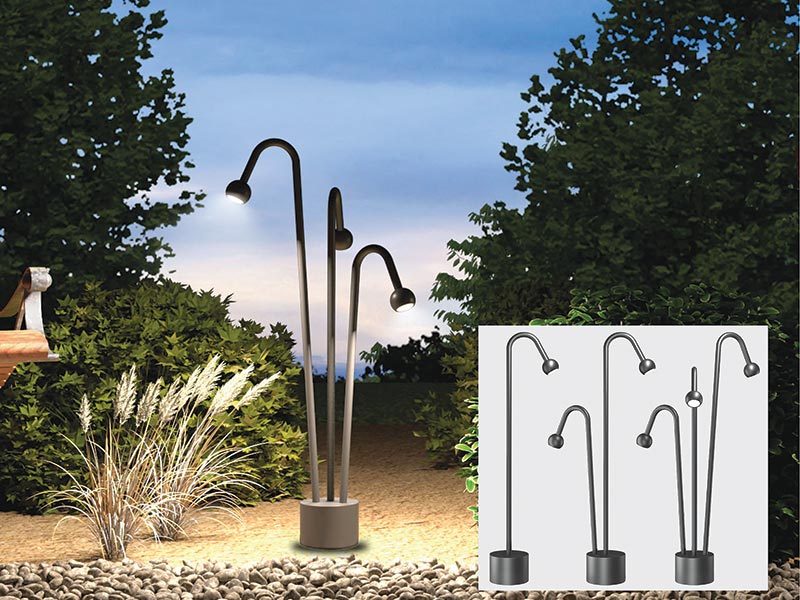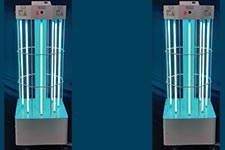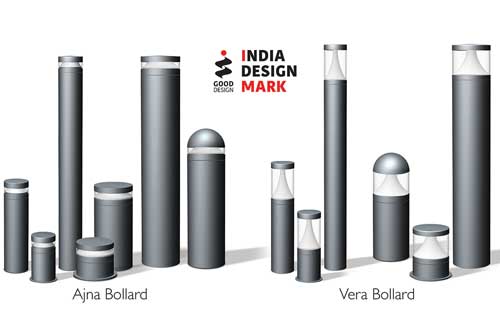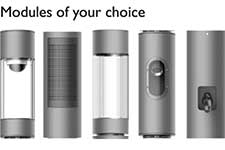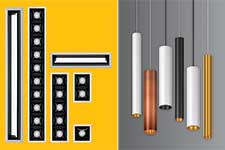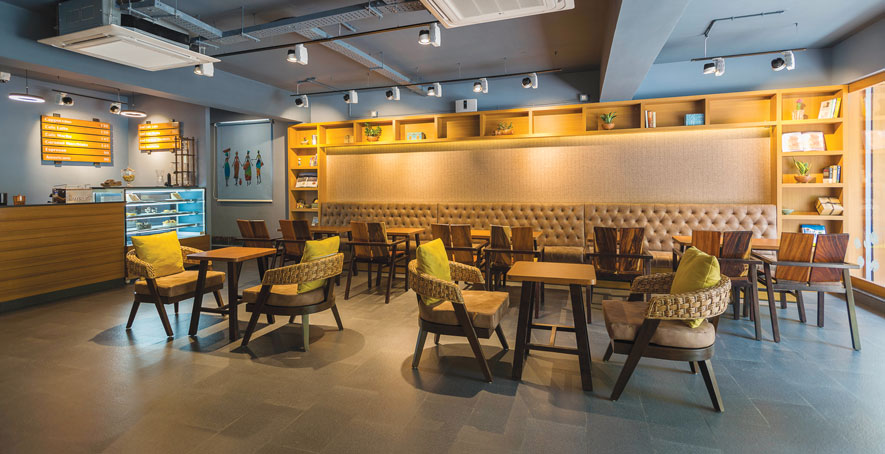
From cove lighting, spotlights and pendant lighting to downlights, fluorescent lamps, chandeliers, string lights and candles, interior designers and architects are creating the desired ambiance using a mix of lamp types that range from the most contemporary to the traditional, and of varying lux levels for different areas and time of the day and night.
Lighting design and lamps are integral to creating the right ambiance in restaurants. While natural day light is preferred with a moderate level of artificial lighting during the day time, a low intensity lighting is desired in the evening to create a relaxed and intimate atmosphere for the diners.
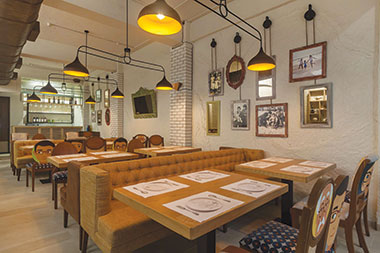
Use of bright and white lights in fast food joints attract customers and give a sense of fast paced activity and quick, efficient service. On the other hand, fine dining is characterized by elaborate decorative lighting fixtures, with low lux levels to create interiors that impart a sense of luxury and quality. Clean, white light with a consistent color rendering, highlights the color and texture of the food making it appear more hygienic and appetizing. On the other hand, lighting that is too dim, can create confusion, alter the colour of the food, and make reading the menu onerous.
Restaurants and bars allow a lot of room for interior designers and architects to get creative and experimental with custom made and unique lighting concepts to generate excitement
It is important to pay attention to the effect created by a lamp type and its light as it can alter the diner’s appearance to either flatter his/her looks or not. Strong overhead lights at sharp angles especially, are considered unflattering, while overhead pendant lights, table lamps and candles that import a soft glow are considered complementary. Lamps placed on floors, or amidst potted plants, on corner tables etc, cast interesting shadows on the ceiling above and around the guests. Glare from reflective glass wall panels and mirrors, or light bouncing off surfaces such as polished tables and countertops can irritate diners.
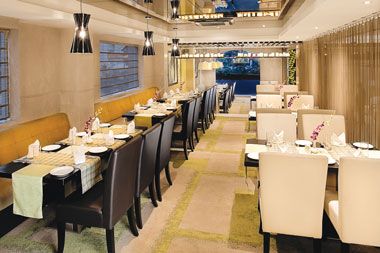
Downlights when recessed or mounted on ceiling beams, highlight spaces such as the entrance, the cashier’s desk, dining tables, the salad bar, etc. Fluorescent light fixtures are recommended for the kitchen, entrance, and parking area because of their bright light, efficiency and cool operating temperature. The light emanated is bright enough to prevent accidents, facilitate quick, efficient operations, and give a sense of safety.
Lighting can transform the restaurant environment and impact business as lighting has a direct impact on the diner’s experience and enjoyment of the place
Comments Tushar Joshi Senior Associate Projects at Ozone Designs, ”High levels of general light suggest work and activity as seen in fast food joints and in cafeterias. Lower light levels suggest peace and rest. People draw closer and talk more quietly in dim light. High-end restaurants have very low light levels. Intensity of light and its direction can transform mood, add some drama to the environs. The same principle can be used to make a surface more dramatic and draw attention to it. Direct, angled light can cast shadows on a wall to highlight its texture. On the other hand, an object such as a painting, lit by a plain light is well illuminated but appears flat. However, lighting the same object by directional spotlight will highlight the painting and give emotion to it.”
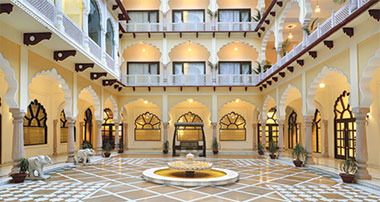
Lighting attracts, so the exterior lighting of a restaurant should be designed to create a striking first impression. Lighting that highlights the architecture or landscape of the restaurant, creates interest in the passers-by. LEDs with their dynamic color-changing are often used for highlighting the place with well-lit signage, sidewalks, pathways and stairways.
One cannot over-emphasize the importance of lighting, as a well-considered lighting design can transform the restaurant environment and impact business because lighting has a direct impact on the diner’s experience and enjoyment of the place.

